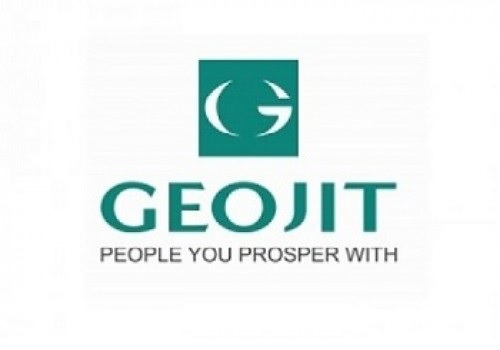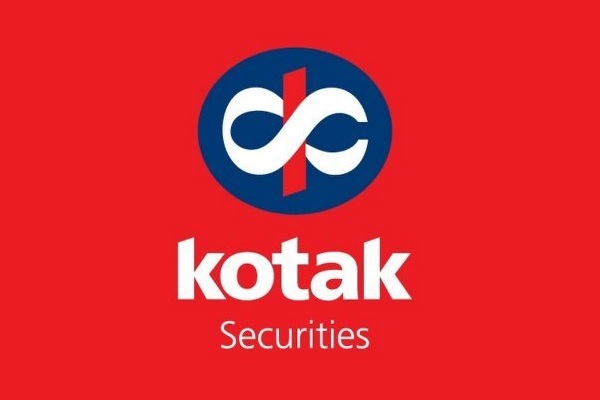Copper trading range for the day is 1008.1-1023.7 - Kedia Advisory

Gold
Gold prices edged higher by 0.23% to 126,751 as investors focused on the Federal Reserve’s policy outlook following the reopening of the US government. President Donald Trump signed the funding bill that ended the record-long shutdown, though delays in key US economic data—such as October jobs and inflation figures—kept traders relying on private indicators. Recent private labor data showed rising job cuts, reinforcing expectations of continued weakness in the US economy and strengthening bets on another 25 bps rate cut, currently priced at around 65%. On the physical market front, China’s gold consumption fell 7.95% in the first three quarters of 2025 to 682.73 tonnes, even as domestic output rose 1.39% year-on-year. India also saw subdued demand amid volatile prices, with dealers offering discounts up to $14/oz to attract buyers. China’s bullion trade fluctuated between a $2 discount and a $5 premium, influenced by new tax policies that reduced exemptions to 6% from November 1. Premiums remained modest in Singapore, Hong Kong and Japan as regional demand stayed tepid. Globally, gold demand rose 3% year-on-year in Q3 to 1,313 tonnes, the highest ever quarterly figure, supported by a 17% jump in bar and coin demand and a sharp 134% rise in ETF inflows. Central bank purchases increased 10% to 219.9 tonnes, while supply climbed with higher recycling and mine output. Technically, the market is in short covering, with open interest down 1.38% to 11,821. Support is placed at 125,980 and 125,200, while resistance is seen at 127,740, with a breakout opening the path towards 128,720.
Trading Ideas:
* Gold trading range for the day is 125200-128720.
* Gold prices climbed as investors focused on the Federal Reserve’s rate outlook following the US government’s reopening.
* President Donald Trump signed a funding bill into law, ending the longest federal government shutdown in US history.
* Private labor data suggest recent job cuts by US firms, signaling continued weakness in the labor market and reinforcing expectations of further rate cuts.
Silver
Silver prices edged higher by 0.23% to 162,470 as investors sought safe-haven assets amid ongoing global uncertainties. Expectations of upcoming Federal Reserve rate cuts strengthened sentiment, supported by signs of weakening labor market conditions in the US. Supply-side concerns also added support, particularly with India’s peak wedding season underway and fears of potential US tariffs on silver. Last week, the US Department of Interior added silver, copper and metallurgical coal to its “critical minerals” list—an important designation that could pave the way for Section 232 investigations and future trade restrictions, similar to earlier moves involving copper. The broader macro backdrop remained volatile, with President Donald Trump signing a funding bill that ended the record 43-day government shutdown. The bill’s temporary nature, however, with a new January 30 deadline, kept political uncertainty elevated. Fed Governor Stephen Miran’s call for a larger half-point rate cut amid falling inflation and rising unemployment further supported precious metals. On the supply and inventory front, silver held in London vaults rose 6.8% in October to 26,255 tonnes (valued at $41.3 billion), as inflows from the US and China eased a liquidity crunch in the London OTC market. Despite some relief, borrowing rates remain historically elevated. Technically, short covering is evident with open interest down 1.05% to 13,488. Support lies at 160,170 and 157,870, while resistance is placed at 165,295, with further upside open toward 168,120.
Trading Ideas:
* Silver trading range for the day is 157870-168120.
* Silver climbed as investors looked to hedge against global uncertainties with precious metals.
* Expectations of Federal Reserve rate cuts, following signs of a weakening US labor market, further supported the metal.
* President Donald Trump signed a government funding bill, officially ending the record 43-day shutdown.
Crude oil
Crude oil edged higher by 0.58% to 5,228 as the end of the longest U.S. government shutdown improved market sentiment and supported the demand outlook. Additionally, the U.S. imposed sanctions on Russia’s Lukoil, restricting transactions after November 21, adding a geopolitical layer to market dynamics. However, the broader environment remains pressured by oversupply concerns, as OPEC+ continues restoring capacity while non-member producers ramp up output. The U.S. EIA’s Short-Term Energy Outlook further highlighted that U.S. crude production is expected to reach a larger record this year than initially forecast, reinforcing expectations of ample supply. U.S. crude inventories rose sharply by 5.202 million barrels in the latest week, the biggest build since late July and well above expectations. Cushing stocks increased by 0.3 million barrels, while gasoline inventories fell by 4.73 million barrels and distillates declined by 0.643 million barrels, offering mixed signals on refined product demand. The EIA projects U.S. output to average 13.59 million bpd this year before easing slightly next year, citing stronger-than-anticipated August production. Global crude and liquids output is forecast at 106 million bpd this year, outpacing consumption estimated at 104.1 million bpd. Technically, the market is in short covering mode as open interest dropped 39.45% to 7,400 while prices gained 30. Support is placed at 5,170 and 5,112, while resistance stands at 5,273, with potential extension toward 5,318.
Trading Ideas:
* Crudeoil trading range for the day is 5112-5318.
* Crude oil gains as end to the longest-ever shutdown of the U.S. government supported the demand outlook.
* OPEC report says oil supply will match demand in 2026.
* IEA raised its global oil supply growth forecasts for this year and next in its monthly oil market report, signalling a deeper surplus in 2026.
Natural gas
Natural gas surged 3.94% to 413.8 as traders positioned for another potential cold spell in December and stronger power-sector demand, despite expectations of milder temperatures next week. A notable driver of sentiment has been rising LNG export activity, with gas flows to the eight major U.S. LNG terminals averaging 17.8 bcfd so far in November, up from the record 16.7 bcfd in October. These flows are anticipated to climb further in the coming months, tightening the export side of the balance sheet. Domestic demand is also strong, with LSEG estimating total U.S. gas consumption—including exports—will rise sharply to 118.6 bcfd this week from 108.6 bcfd last week due to colder weather before easing to 114.7 bcfd as temperatures moderate. On the supply front, U.S. Lower 48 output continues to hit records, averaging 109 bcfd in November versus 107 bcfd in October. Robust production has supported above-normal storage levels, with inventories standing 4% higher than the seasonal average. Storage rose by 33 bcf last week to 3,915 bcf, nearly matching expectations and leaving stocks just 0.2% below year-ago levels. Technically, the market is under fresh buying as open interest increased 10.27% to 22,823 while prices gained 15.7. Support is placed at 400.5 and 387.1, while resistance is at 421.8 with a potential extension toward 429.7.
Trading Ideas:
* Naturalgas trading range for the day is 387.1-429.7.
* Natural gas rose as traders bet on another round of cold weather in December and firmer power demand.
* The average amount of gas flowing to the eight big U.S. LNG export plants has risen to 17.8 bcfd so far in November, up from a record 16.7 bcfd in October.
* Gas output in the Lower 48 states has risen to 109.0 billion cubic feet per day (bcfd) so far in November, up from 107.0 bcfd in October.
Copper
Copper prices ended marginally higher, settling up by 0.06% at 1014.05 as overall risk sentiment improved after President Donald Trump approved a short-term funding bill that ended the longest U.S. government shutdown. Expectations of further Federal Reserve rate cuts, driven by emerging signs of labor market softness, also supported broader risk assets. Additional optimism came from the U.S. decision to include copper in its expanded list of critical minerals, highlighting its strategic importance for electric vehicles, renewable power grids and data centers. On the supply side, speculation increased that China may soon tighten controls on copper refining capacity following recommendations from its nonferrous metals association, adding to expectations of reduced future output. Production data from major global miners also indicated mixed trends: Chile’s Codelco reported a 7% decline in September output, Glencore–Anglo American’s joint operation saw a 26% fall, while BHP’s Escondida posted a 17% rise. SHFE inventories dropped 1% for the week, reinforcing expectations of tighter supply next year amid several anticipated mine disruptions. The ICSG projected a refined copper surplus of 178,000 tonnes in 2025 before shifting to a 150,000-tonne deficit in 2026, with mine production expected to grow 1.4% and 2.3%, respectively. The market is witnessing short covering, with open interest down 4.44% to 7,645. Support is placed at 1011.1, with deeper downside seen at 1008.1. Resistance stands at 1018.9, above which prices could test 1023.7.
Trading Ideas:
* Copper trading range for the day is 1008.1-1023.7.
* Copper rose as risk sentiment strengthened after President Trump signed a short-term funding bill ending US government shutdown.
* Hopes for additional Federal Reserve rate cuts amid signs of labor market weakness further supported risk assets.
* Fresh production data reinforced expectations of tighter supply next year.
Zinc
Zinc edged higher, settling up by 0.11% at 305.7 as inventories across major exchanges continued to decline, providing underlying support. LME-registered stocks fell to 35,875 tons, their lowest since February 2023, while SHFE inventories dropped to 100,208 tons, down 8% over the past two weeks. Despite tightening supply fundamentals, the upside remained capped as weaker manufacturing PMIs in both China and the U.S. weighed on industrial demand sentiment. China’s October economic data, however, offered some relief, with consumer inflation turning positive and PPI deflation easing, signaling early signs of stabilizing economic conditions. Additional support came from expectations that the U.S. Senate would pass a funding bill extending government operations through January 2026, easing market uncertainty. Global data showed zinc inventories outside China at extremely low levels, while ILZSG figures indicated a surplus of 47,900 tons in August and a cumulative surplus of 154,000 tons in the first eight months of 2025. China’s refined zinc production showed mixed trends, with a 4% month-on-month decline in September but strong year-on-year growth due to earlier capacity ramp-ups. Maintenance shutdowns and output adjustments across major producing provinces also contributed to fluctuating supply, with October production expected to rise 4% MoM and 22% YoY. The market is experiencing fresh buying interest, with open interest rising 0.55% to 2,910 as prices gained 0.35 rupees. Zinc has immediate support at 304.5, with further downside risk toward 303.2. Resistance is placed at 307.4, and a breakout above may lift prices toward 309.
Trading Ideas:
* Zinc trading range for the day is 303.2-309.
* Zinc gains as stocks in LME are near their lowest since February 2023 at 35,875 tons.
* SHFE zinc stocks fall 8% in two weeks to 100,208 tons, extending supply decline.
* October data from China signalled easing deflation and lifted confidence in economic recovery.
Aluminium
Aluminium prices drifted lower, settling down by 0.29% at 273 as traders booked profits following weaker lending data from China. Bank lending in October fell sharply, underscoring persistent softness in credit demand and dampening sentiment across industrial metals. However, the downside remained limited due to ongoing concerns over global supply tightness, supported by China’s renewed measures to stabilise growth, the U.S. moving closer to restoring full government operations, and continued production issues at multiple smelters worldwide. Market support also stemmed from expectations of improving demand and constrained output growth in China as the country remains bound by its aluminium capacity cap of 45 million tonnes. Investment inflows have strengthened into LME aluminium contracts, reflecting expectations that years of oversupply may be ending. Physical market tightness was evident as the European aluminium premium surged to $328, nearly doubling from June levels. SHFE aluminium inventories fell slightly by 0.2%, further reinforcing the tightening supply narrative. Production disruptions continued to add pressure: Iceland’s Grundartangi smelter suspended a potline, Alcoa announced the closure of its Kwinana alumina refinery, and Century Aluminium curtailed two-thirds of output at its Iceland smelter. The market is undergoing long liquidation, with open interest falling 1.63% to 3,082 as prices slipped by 0.8 rupees. Aluminium has immediate support at 272.4, with further weakness likely toward 271.8. Resistance is seen at 274, and a break above could push prices toward 275.
Trading Ideas:
* Aluminium trading range for the day is 271.8-275.
* Aluminium dropped on profit booking amid weak lending data from China.
* In China, new loans by Chinese banks fell sharply in October from the previous month, missing expectations.
* ANZ raised its short-term aluminium price target to $2,900 per ton from $2,700.
Turmeric
Turmeric prices fell by 0.6% to settle at 14,942 amid an increase in acreage following favorable rains during the sowing season. However, the downside remained limited as crop yields in key growing states like Maharashtra, Andhra Pradesh, and Karnataka were impacted by excessive rainfall. Continuous rains in Erode have also led to disease outbreaks and preservation challenges due to high humidity, while reports of damage to standing crops in Nanded—affecting about 15% of the area—added some support to prices. Farmer-held stocks in Warangal are nearly exhausted, and low arrivals in spot markets are keeping trade sentiment firm. On the production front, turmeric acreage for 2024–25 stands at 3.30 lakh hectares, about 10% higher than last year, with estimates indicating a further 15–20% increase due to improved sowing conditions and lower profitability in alternative crops. At the Duggirala market, strong buying interest is observed for new crop arrivals, with fresh stocks fetching higher prices owing to superior quality. Daily trading activity remains healthy, with 1,000–1,200 bags changing hands, and around 50–55% of the new crop already traded. Exports have shown steady improvement, rising 3.31% to 80,156.56 tonnes during April–August 2025. In August alone, exports rose 7.27% year-on-year and 13.71% month-on-month. The market witnessed long liquidation, with open interest down 1.56% to 11,345. Turmeric has support at 14,834 and 14,724, while resistance is seen at 15,072 and 15,200.
Trading Ideas:
* Turmeric trading range for the day is 14724-15200.
* Turmeric dropped amid increase in acreage due to favourable rains during the current sowing season.
* However downside seen limited as yields in Maharashtra, Andhra Pradesh and Karnataka have been affected due to rains.
* Recent heavy rainfall in Nanded has adversely affected the region's turmeric cultivation, damaging approximately 15% of the crop area.
* In Nizamabad, a major spot market, the price ended at 14981.85 Rupees dropped by -0.76 percent.
Jeera
Jeera yesterday settled marginally higher by 0.05% at 20160, supported by short covering after recent declines driven by weak export demand following the end of the retail season. Traders noted subdued activity from foreign buyers, while comfortable supplies and sufficient stock levels continued to exert pressure on prices. Demand remains sluggish, with most export requirements being fulfilled from existing inventories. However, the downside was limited amid low arrivals during the Diwali holidays and some level-based buying interest. Support also emerged after the GST Council reduced the tax rate to 5%, which is expected to boost FMCG exports and domestic consumption. Farmers reportedly hold around 20 lakh bags of cumin, with an estimated 16 lakh bags likely to be carried forward as unsold stock by season end. Production this year is estimated at around 90–92 lakh bags, lower than last year’s 1.10 crore bags due to reduced acreage. Gujarat’s output is projected at 42–45 lakh bags and Rajasthan’s at 48–50 lakh bags. On the global front, cumin production is expected at 70–80 thousand tons in China, 9–10 thousand tons in Syria, 10–11 thousand tons in Turkey, and 10–12 thousand tons in Afghanistan. Jeera exports during Apr–Aug 2025 dropped 17.02% year-on-year to 85,977.39 tonnes. Technically, the market is under short covering as open interest fell by 16.17% to 840 while prices rose slightly by 10. Support is at 20070, resistance at 20230, with potential testing towards 20290 on an upside breakout.
Trading Ideas:
* Jeera trading range for the day is 19970-20290.
* Jeera gains on short covering after prices dropped due to weak export demand post retail season.
* Jeera exports during Apr - Aug 2025, dropped by 17.02 percent at 85977.39 tonnes as compared to 103614.50 tonnes exported during Apr - Aug 2024.
* Traders attributed the fall mainly to the conclusion of the retail season and continued inactivity on the part of foreign buyers.
* In Unjha, a major spot market, the price ended at 20264.1 Rupees dropped by -0.38 percent.
Views express by all participants are for information & academic purpose only. Kindly read disclaimer before referring below views




















